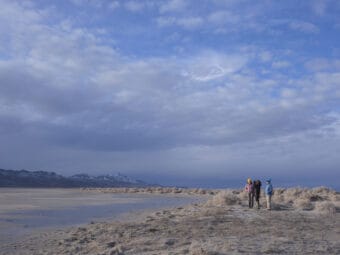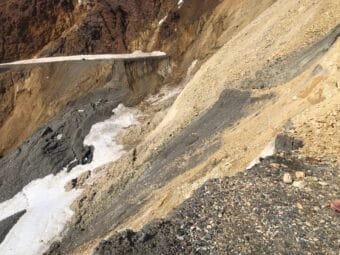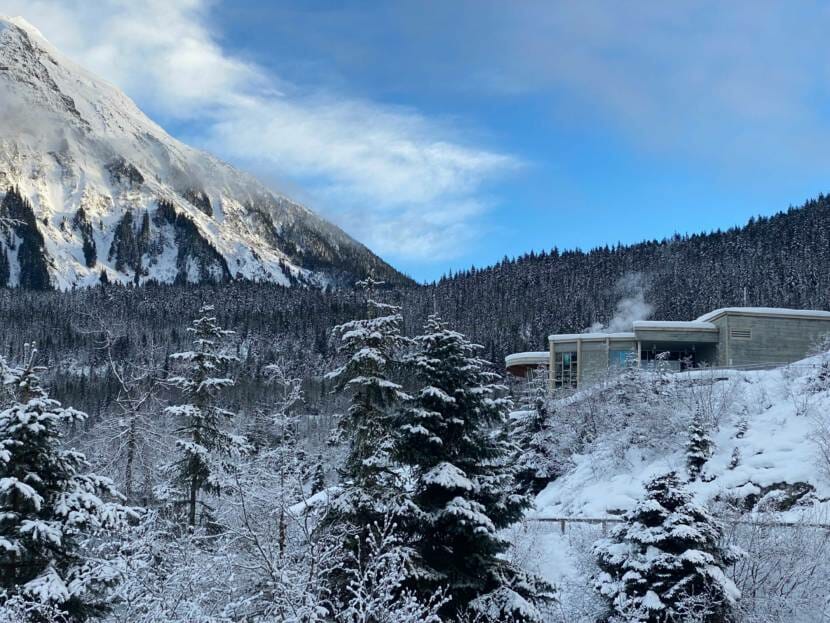
A new study shows retreating glaciers are likely to open up thousands of miles of salmon spawning habitat by the year 2100. While that may sound like the distant future, it’s the blink of an eye in geologic time.
Eran Hood is a biologist who teaches Environmental Science at the University of Alaska Southeast. He co-authored a study that maps where glacier retreat will open up new spawning zones for salmon over the next 75 years. The findings are new, but the process isn’t. It’s already happened right here near the Mendenhall Glacier in Juneau.
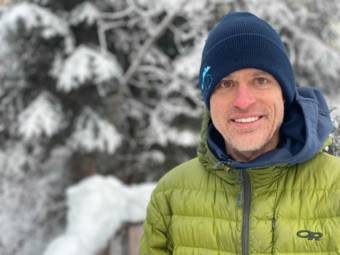
“One of the streams here at the glacier … now has spawning salmon. And it didn’t probably 100 years ago. The stream was covered by ice. So this is new habitat that’s opened up since the Mendenhall Glacier has retreated,” Hood said.
Technically, Steep Creek is also covered by ice today, but it’s not glacier ice. There are some patches of dark flowing water where the current resists freezing. Under the snow, salmon eggs are nestled in the gravel of the stream bed.
This is just a small example of what could happen on a much larger scale over the next hundred years, especially in the region between the Alsek and Copper rivers. Deglaciation could increase salmon habitat by nearly 30% in the Gulf of Alaska by 2100.
“We look at the glacier now, and you just think, ‘oh, everything underneath that is sort of barren, unproductive land,’ which is true when the glacier recedes … but in the longer term, it can develop into productive habitat,” Hood said.
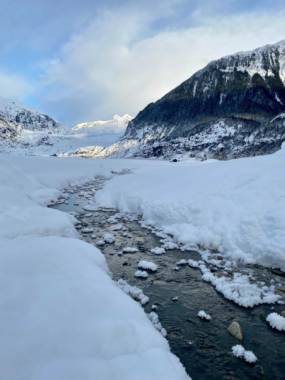
The study looks at the ecosystems in terms of salmon, but there are other opportunities in the newly revealed earth.
“There are competing interests in some of these landscapes that are being opened up by glacier recession,” Hood said. “And one of those interests might be the development of minerals.”
Jonathan Moore, a Simon Fraser University professor and another author of the study, says mining interests in the transboundary region of northern British Columbia see potential in underground minerals currently buried by glaciers.
“Groups are staking claims on recently deglaciated areas. And then also, you know, preemptively in some cases,” Moore said.
That is, companies are staking claims on glacier-covered land with the knowledge that the melting glacier might reveal mineral-rich earth. In Alaska, mining interests have staked claims on new territory that was under the Herbert Glacier. And earlier this year, the U.S. Forest Service made moves to protect it from happening at the Mendenhall.
Moore says the paper shows areas where salmon and mining may jostle for space.
“There are these brand new rivers that are being created. And I think, you know, we have a bit of a decision in front of us in terms of what happens to those, you know, newborn nascent ecosystems and one option is to think about their potential value for salmon and steward them accordingly,” he said.
Hood says glaciers — and the way they retreat — have a tremendous impact in Southeast Alaska. Even here, at this relatively small salmon stream.
“This is obviously an important population for tourism much more than a fishery because this is probably the most common place that people come to view salmon,” Hood said.
In 30 years, tourists who stand at the window of the Mendenhall Glacier Visitor Center probably won’t be able to see the glacier. But if they stand by this stream, they’re likely to see salmon and bears in the ecosystem the glacier left behind.

